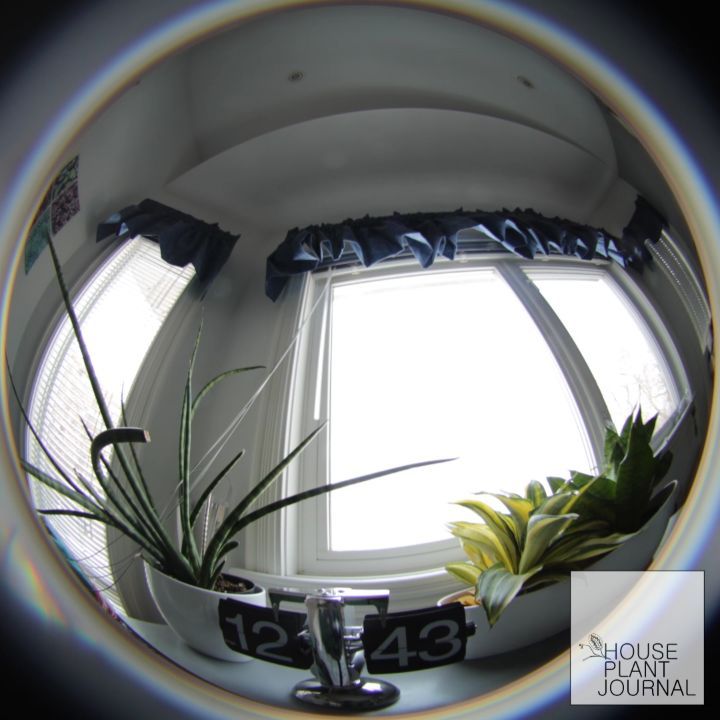Video taken on Jan. 18, 2018:
.
Sunrise: 7:46 am
Meridian: 12:27 pm, 26° elevation
Sunset: 5:10 pm
(from www.timeanddate.com – such a fun website! Yes, I’m entertained by precise data and interactive graphs)
.
Camera: Canon Rebel T4i
Settings: 5.8mm lens, 1/40, f/4, ISO 100
.
Notes: by locking the exposure of the camera, you can get a better sense of the dynamic range of brightness that occurs throughout the day. This is my bedroom window, which faces north. NO DIRECT SUN enters my bedroom, which means all this light is “indirect light” and you can clearly see that it is the sky that is the source of this kind of light. Yes, this light originated from the sun but for the purpose of understanding direct and indirect light, you ought to think of WHAT you can see instead of judging brightness – it’s easier to answer yes/no to the questions “can I see the sky? Can I see the sun?” than to assess “how bright is this light?” (without a light meter). Direct sun means the plant can see the sun for at least a few hours. Indirect light means the plant can see the sky. The bigger the view of the sky, the more total light the plant receives. Nearly ALL house plants prefer bright indirect light, which you should interpret to mean “give your plant the biggest view of the sky as possible”. If the sun comes into view, then you’ll need to figure out if the plant can tolerate direct sun. Getting a good understanding of light is the first step in plant care. Watering is second.
~
~
#sansevieriasunday #sansevieria #snakeplant #foliage #houseplants #plantlove #indoorplants #plantlife #urbanjunglebloggers #houseplantclub #plantstyling #houseplantjournal #plants #greenthumb #plantcare #timelapse #chasinglight #light #lensbaby #fisheye


Comments are closed.